
Most individuals who invest in precious metals value coins made of gold or silver due to their high liquidity and precious metal content. However, the rarity and historical significance of some of the scarcest coins in the world allow them to command incredibly high prices. This article will delve into the world's most expensive coins and provide interesting facts about these valuable items while exploring ways to minimize risks when investing in them.
Coins are small, flat, and circular objects used as a legal tender or medium of exchange. They are produced in large quantities at mints to facilitate trading and are usually of a consistent weight.
Governments are typically responsible for issuing coins, which often feature numerals, text, or images. The front and back of coins or medals are called the obverse and the reverse. The head side of a coin, which often depicts the image of a prominent individual or icons, is known as the obverse, while the tail side is referred to as the reverse.
Bullion is identified by its weight and quality, verified by a stamp. Contrary to common opinion, bullion is not limited to ingots or bars; it is also available in the form of coins. Bullion coins are manufactured yearly from valuable metals, providing a more feasible and economical investment alternative as they are smaller than full bars.
Unlike bullion coins, proof coins are made in smaller quantities with a more reflective or cameo-like appearance. They are also of superior quality. The United States Mint produces some of the highest quality coins, and proof coins are no exception.
The coin's polish is referred to as "proof". To guarantee premium striking, proof blanks are meticulously cleaned, polished by hand, and given extra attention.
Proof coins have a more detailed and smoother appearance than regular circulation coins since they are minted under pressure or with several strikes.
Furthermore, proof coins are packaged uniquely and have an authenticity certificate to preserve their quality and stop rust. For instance, proof versions of the American Eagle series are available in gold, silver, and platinum for investors and collectors.
Numismatic coins, which are frequently older and prized by collectors, are valuable due to their artistic, collectible, and historical significance, in addition to their precious metals.
Independent third-party agencies that grade and report on the condition and value of numismatic coins are required to certify them. The famous $5, $10, and $20 Indian and Liberty gold coins are a few instances of numismatic coinage.
Semi-numismatic coins possess the characteristics of bullion and numismatic coins. They are relatively new bullion coins with limited mintage, making them appealing to investors and collectors. The animal series by the Royal Canadian Mint includes unique feature coins. Over time, the value of semi-numismatic coins may exceed that of bullion due to their rarity.

According to experts, the 1794 Flowing Hair Silver Dollar is considered one of the most valuable coins ever sold. It is believed to be the initial silver dollar made by the U.S. Mint.
The front of the coin features a portrait of Lady Liberty with her hair flowing, while the back depicts an American eagle. These coins are scarce—fewer than 1,800 were ever made, and one expert estimates that there are just 120 to 130 left. In 2013, the coin was bought for little more than $10 million at auction.
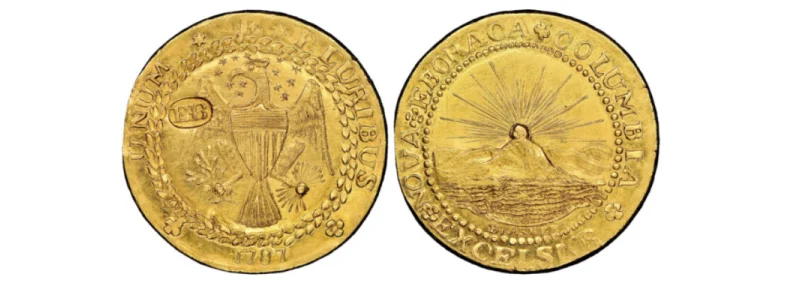
Late eighteenth-century goldsmith and silversmith Ephraim Brasher of New York City created the Brasher Doubloon. On the reverse of the coin is a depiction of the American eagle with a shield, whereas the front displays the state seal with a rising sun. Despite its rarity, varying amounts have been paid for different coin versions, depending on its distinctive characteristics.
Coin World reports that a private auction in 2018 of a different doubloon featuring the EB signature on the bird's wing brought in over $5 million. In January 2021, a third auction saw a Brasher Doubloon reach a record $9.36 million.
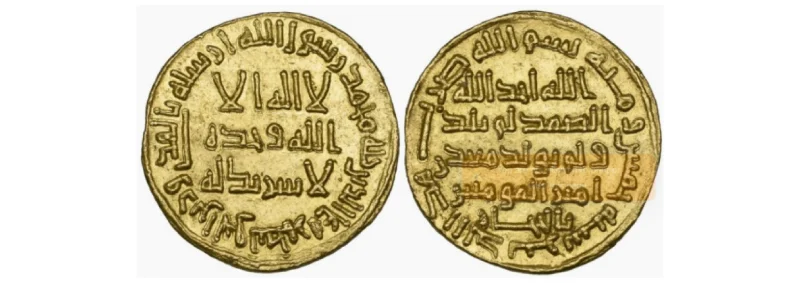
One of the most valuable Islamic coins is the 723 Umayyad gold dinar, produced from gold mined at a caliph's property. The coin, which says "mine of the commander of the faithful", is the first to feature a Saudi Arabian locale on an Islamic coin. According to specialists, about a dozen examples of the currency exist.
The coin sold for 3.7 million pounds, or over $6 million, at auction in 2011, making it the second-most expensive coin ever sold at an auction. A different coin variant was offered for sale in 2019 for the same price in pounds, but it was worth roughly $4.8 million in dollars.

An Oldie and Goldie is one of the costliest coins in the world. There are currently only three known gold coins, one of which is the Edward III Florin from 1343. Two specimens discovered in the River Tyne in 1857 are kept in the British Museum in London. In 2006, a prospector using a metal detector found the third coin.
Enclosed in a quatrefoil, the Royal Cross is featured on the reverse of the coin, while King Edward III is shown sitting on his throne on the front, flanked by two leopard heads. The design of the coin has earned it the nickname Double Leopard.
The coin discovered in 2006 brought in a record-breaking 480,000 pounds, or almost $850,000, at auction. The coin is currently estimated to be worth $6.8 million.
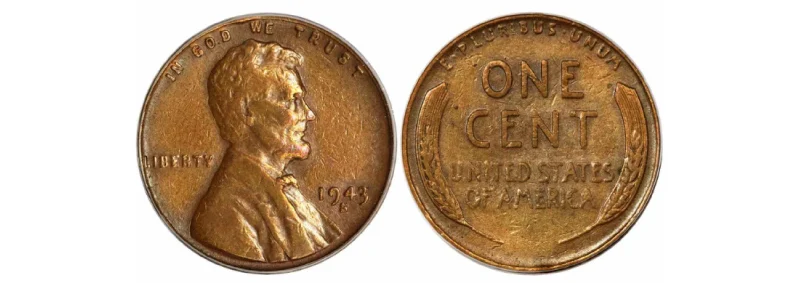
The 1943 Lincoln Head Copper Penny is a unique coin. Its production was affected by the time conditions, making it exciting and valuable. Rather than being made of copper and nickel, steel was used to produce pennies due to the need for these metals in war efforts. However, a mistake in the production process led to a batch of pennies being struck with copper. This was possible because the mint began making new steel pennies before the blanks remaining in the press were used up. Around 40 of these pennies are believed to exist, although some experts suggest that there may be fewer than 20 examples remaining.
Counterfeiting of steel pennies coated with copper and altered coins from 1945, 1948, and 1949 is expected, as per the US Mint. To determine if a coin is made of steel, one can use a magnet to check if it attracts. A regular steel 1943 Lincoln penny's value can be as high as 30-40 times its face value at 30 or 40 cents; however, the unique copper versions fetched $204,000 in a 2019 auction.
According to Coin Week, the highest sales price ever paid for a version of this coin was $1.75 million at an auction in 2010.
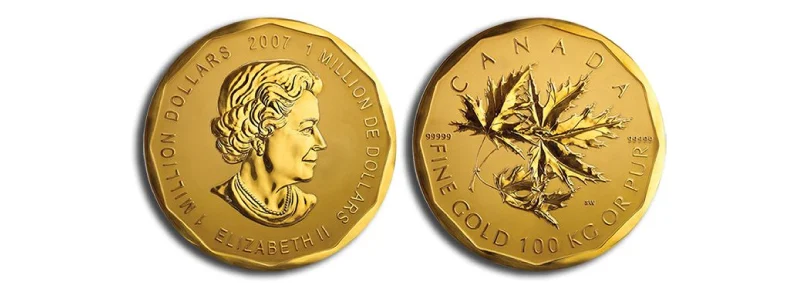
The $1 million Canadian gold Maple Leaf coin weighs an incredible 100 kilograms or almost 220 pounds. It is a novelty currency if there ever was one.
As of December 2022, just six virtually pure gold coins with $1 million face values had been produced. As a promotion, the mint used them to display their one-ounce gold Maple Leaf coins. In October 2007, the Guinness Book of World Records officially recognized the coin as the largest gold coin globally, with Queen Elizabeth II's face on one side and a Canadian maple leaf on the reverse. The coin's dimensions are slightly over an inch thick and 50 centimeters (or around 20 inches) broad.
In 2010, the coin fetched a price of 3.27 million euros, equivalent to just over $4 million. A Berlin Museum was robbed of one of the coins in 2017, and three men were found guilty of the crime and received several years of imprisonment, but the coin still needs to be retrieved.
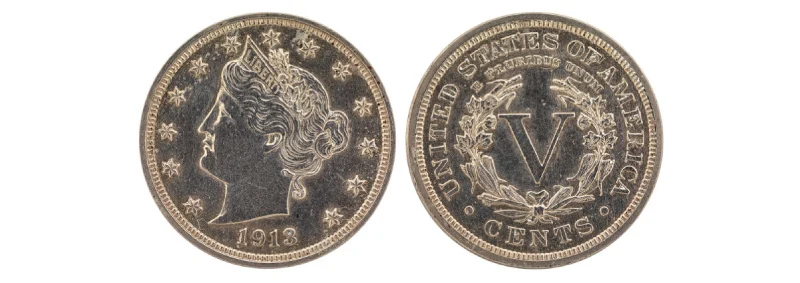 a>
a>
Despite not being as old as other coins on this list, this is nonetheless precious. It's one of the rarest coins in existence. From 1883 to 1913, the United States Mint produced the Liberty V Nickel; however, the 1913 batch only had an estimated five coins.
On a few occasions since 2000, examples of the coin have been put up for auction and have brought in several million dollars. A particular version allegedly brought in $4.15 million in 2005 before being swapped for $5 million in 2007. In 2010, another sold for more than $3.7 million; in 2018, another was sold for $4.56 million. In October 2022, one of the coins was purchased by GreatCollections, an auctioneer, for $4.2 million.
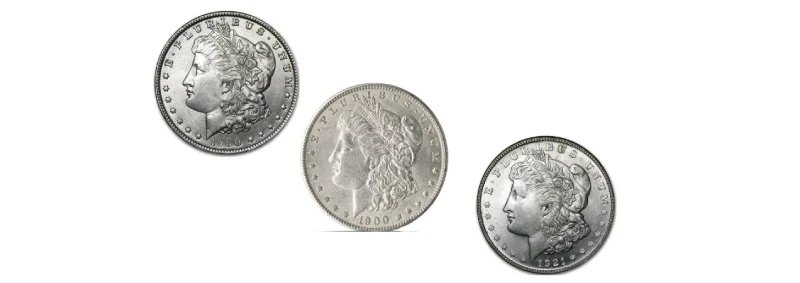
Morgan silver dollars are not rare, but some less common ones can be pretty valuable. Even if you do not own one of the more obscure types, the Morgan is a stunning item with the weighty sensation of a well-constructed coin that consists of 90 percent silver.
A Morgan that is in standard condition should be worth at least $20, which serves as a starting point considering its silver content and the current value of precious metals.
However, it is essential to pay attention to the mint mark, an alphabetical symbol on certain coins, for the following Morgan models, can be sold for a lot more than that:
- 1893 S Morgan
- 1901 Morgan
- 1889 CC Morgan
- 1884 S Morgan
- 1893 O Morgan
If these coins are in mint condition, each could bring over $100,000 up to $550,000, per CoinTrackers. Furthermore, other types of the Morgan silver dollar can exchange hands for tens of thousands of dollars.
The value of a coin can be significantly influenced by its mintage number, which can be high or low. The number of coins a mint produces can vary yearly, resulting in some years and mint marks being more scarce than others.
Differences could be discovered in a coin within a date and mint mark. Each mint began making 1909 cents with the initials VDB at the bottom of the reverse side. However, the decision to eliminate the initials was made shortly after.
The VDB coins have a higher value due to fewer being minted, once again proving the correlation between rarity and value.
A coin's value usually increases as more people become interested in it. The Morgan and Peace Dollars are two of the most well-known American coin series, which generally have higher prices than equally rare series.
Although these two types of dollars have been popular for a long time, collector demand for other series may vary over time.
Coins that have greater attention from more people are usually more expensive. The Morgan and Peace Dollars are among the most well-known series in American history, which are also often more costly than other series of comparable rarity.
Although these two classic dollars have always been popular, collector interest in other series can fluctuate. For example, as the years go by, interest in buffalo nickels and Mercury dimes increases and decreases with no explanation. Other coin series with similar grades and conditions cost more than collector coins that are constantly less popular, such as half-cent.
If you send coins to a TPG for grading, you can provide information about the strike characters and specific designations. For example, pennies that have not been circulated and are graded as mint state will be given a color designation.
The color designation can be Brown, Red-Brown, or Red, indicating how much red color and luster the piece retains. Coins with most or all of their original color typically command higher prices.
Coins have been used for millennia; the United States began to use copper, silver, and gold coins in 1793.
Coins can symbolize luck and riches and are used in various modern activities, such as penny wars and coin tossing in fountains. These core pieces of American money date back more than 220 years. The following interesting facts about US coins:
When the US Mint started producing coins, precious metals like gold and silver were used. Eventually, the expense of using these materials to make coins became prohibitive. The US Mint now uses copper-plated zinc and cupro-nickel to make American coins.
Because they were helpful, the United States utilized two- and three-cent coins before 1873 and 1889. However, the US Mint stopped making these specific coins as the prices increased.
The United States Mint produced several "Eagle" coins denoting $2.50, $5, $10, and $20 centuries ago. A quarter eagle was the name given to a $2.50 "Eagle". The $20 coin was called a "Double Eagle," and the $5 "Eagle" was a half-eagle.
The US Mint will eventually recycle coins, but a penny can last forty years in your wallet!
Isaac Newton developed the idea of reeded edges to stop anyone from tampering with or shaving off the edges to remove valuable metals when coins were made of gold and silver.
An eagle debuted as the primary animal representation on a coin in circulation 1794.
The bison, sometimes known as the buffalo, was the second animal to appear on a nickel between 1913 and 1938.
Due to a shortage of copper in 1943, the US Mint was forced to make pennies out of steel coated in zinc. They resembled dimes quite a little.
The US Mint produces more coins and medals than any other mint. Additionally, coins for foreign nations have been manufactured by the US Mint! The US Mint exclusively produces coins for the United States; the last time it made coins for a foreign country was in 1984.
President Lincoln became the first American president to be featured on a currency when he started to appear on the one-cent coin in 1909.
An estimated $10 billion worth of coins are being kept in houses throughout the United States!
Even if rare coins have a certain allure, remember that the numismatic market is often unpredictable. Estimating a coin's potential value above its face value is frequently tricky.
On the other hand, legal tender coins, rounds, and bars made of precious metals offer a secure and well-balanced hedge that can assist in mitigating risks during an unstable economic climate.
BOLD Precious Metals is your reliable source for readily tradeable investment bullion products and collectibles of high-purity silver, gold, platinum, and palladium.
Explore our vast inventory of coins, rounds, and bars, and incorporate high-value coins to diversify your assets.